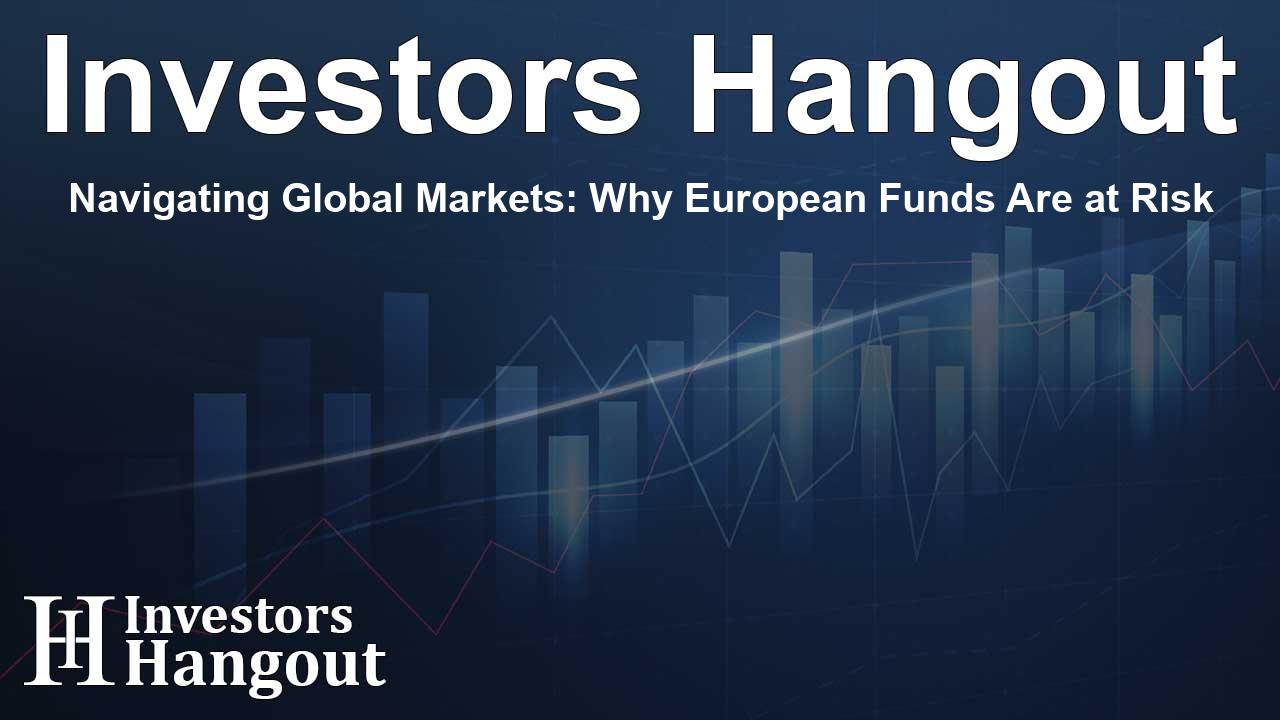Navigating Global Markets: Why European Funds Are at Risk

The Current State of the Market
Remember a few months ago when the excitement around “buying Europe” was all the rage? It was a hot topic among investors eager to shift their focus from American markets. Fast forward to today, and it seems like ‘buy America’ has taken the spotlight again, leaving European markets in an unexpectedly high position compared to their American counterparts.
This shift could pose challenges for those holding investments primarily focused on Europe. In this article, we will explore the evolving trends in the market, particularly emphasizing the implications for several funds that have ties to European investments.
Why the Shift Away from Europe?
Recent analyses highlight how predictions that favored European stocks have not resulted in anticipated profit gains. Major financial news outlets fueled this optimism earlier this year, illustrating a shift that seemed favorable for European markets, driven by factors such as high tariffs on U.S. imports and promising forecasts for certain sectors.
However, as scrutiny increased, disappointing earnings from European firms overshadowed early optimism. The European stock market, which once appeared poised for a comeback, has faced a stark contradiction as earnings fail to meet projections.
Evaluating Corporate Progress
In the second quarter, U.S. companies exhibited a healthy 9% increase in profits compared to the previous year. This starkly contrasts with their European peers, who have struggled to showcase significant growth, particularly in the tech and telecom sectors. The substantial gap in earnings growth between these markets suggests that European stocks may be overvalued at this juncture.
As a case in point, while U.S. communication services, including giants like Alphabet and Meta Platforms, are thriving, their European counterparts are lagging, creating a widening divide that investors should note.
Risks Involved with European-Focused Funds
With such an imbalance in performance, it’s no surprise that investment funds heavily weighted towards European stocks face scrutiny. One notable fund worth discussing is the Abrdn Global Infrastructure Income Fund (NYSE: ASGI). This fund has garnered attention due to its attractive 11.8% yield. However, investors should be cautious; while ASGI does have a significant portion of its assets in U.S. stocks, its European exposure still poses risks.
With 22% of its portfolio allocated to continental European stocks and an additional 2.6% in the UK, there’s a potential vulnerability should European markets experience downturns. Additionally, the fund has seen a notable reduction in its discount relative to net asset value, which may lead to a decline in share price if European stocks correct.
Know Your Investments
Another fund to keep an eye on is the PIMCO Income Strategy II Fund (NYSE: PFN), which also illustrates the dangers of being overly exposed to Europe. While it offers a stable yield of 11.5% and primarily invests in U.S. assets, it also holds allocations in European countries, presenting a risk if these markets falter. Investors might find themselves dealing with diminished returns and increased strain on payouts should European firms continue to underperform.
Final Thoughts on European Investments
In conclusion, while diversification across geographic markets is essential for building a robust portfolio, a cautious approach is advisable when it comes to European stocks. The current uncertainties surrounding their profit growth demand that investors tread carefully and remain vigilant as market conditions evolve.
Frequently Asked Questions
What prompted the shift from 'buy Europe' to 'buy America'?
The shift was driven by disappointing earnings from European firms and stronger performance in U.S. markets.
Which funds should investors avoid due to European exposure?
Investors should be cautious with funds like Abrdn Global Infrastructure Income Fund (NYSE: ASGI) and PIMCO Income Strategy II Fund (NYSE: PFN).
How significant are the earnings differences between U.S. and European companies?
U.S. companies experienced a healthy 9% profit growth compared to Europe's stagnant earnings, indicating a significant performance gap.
Can geographic diversification still be beneficial in this market?
Yes, but it should be approached carefully, considering current market conditions and earnings performance.
What factors led to European firms underperforming?
Earnings growth expectations were not met, alongside broader economic challenges within European markets.
About The Author
Contact Kelly Martin privately here. Or send an email with ATTN: Kelly Martin as the subject to contact@investorshangout.com.
About Investors Hangout
Investors Hangout is a leading online stock forum for financial discussion and learning, offering a wide range of free tools and resources. It draws in traders of all levels, who exchange market knowledge, investigate trading tactics, and keep an eye on industry developments in real time. Featuring financial articles, stock message boards, quotes, charts, company profiles, and live news updates. Through cooperative learning and a wealth of informational resources, it helps users from novices creating their first portfolios to experts honing their techniques. Join Investors Hangout today: https://investorshangout.com/
The content of this article is based on factual, publicly available information and does not represent legal, financial, or investment advice. Investors Hangout does not offer financial advice, and the author is not a licensed financial advisor. Consult a qualified advisor before making any financial or investment decisions based on this article. This article should not be considered advice to purchase, sell, or hold any securities or other investments. If any of the material provided here is inaccurate, please contact us for corrections.
